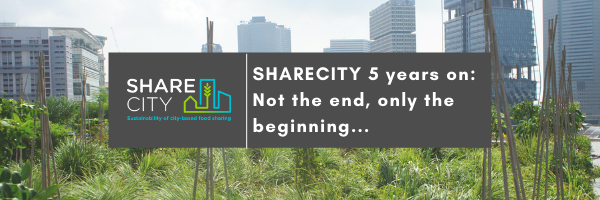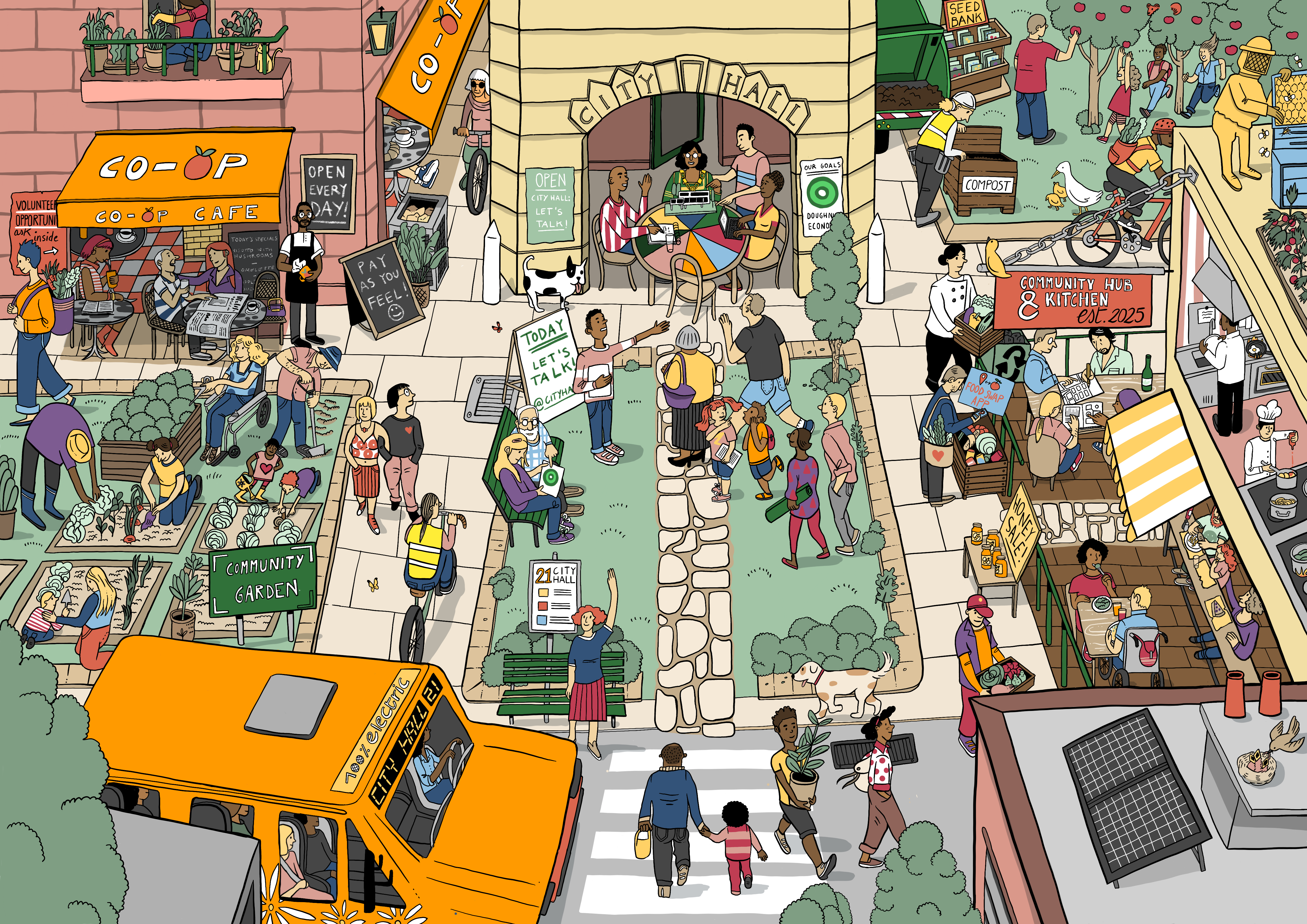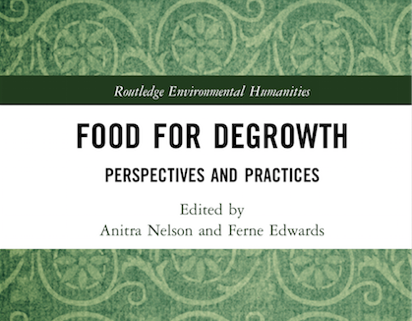Some Frequently Asked Questions
Published by SHARECITY on the 21st April 2016.

F.A.Q.
We have been getting some great feedback from the global community about the food-sharing activities going on in their areas – thank you very much for your input! However, as there are no agreed definitions of what qualifies as food sharing we’ve been getting some questions around what to include. We’ve put together some general responses to key questions which will hopefully make things a little clearer.
What counts as ‘food sharing’?
‘Food sharing’ is not limited to the physical exchange of edible products, but can be defined as:
- Having food with another or others; e.g. sharing consumption
- Giving food to others; e.g. gifting
- Exchanging food with others; e.g. bartering, swapping or selling
- Using, occupying, or enjoying something food-related jointly; e.g. shared use of growing, cooking, or eating spaces, or shared growing, cooking or eating experiences.
- Possessing an interest in food in common; e.g. shared interest, knowledge, or skills.
We are looking for networks, communities, businesses, groups and organisations that facilitate food sharing activities such as seed exchanges, food swaps, communal gardening, supper clubs, knowledge and skills sharing groups, and many other types of activities that use some form of technology to function, be that a facebook page, a twitter account or some other form of social media interaction, app or website.
Don’t worry if you are unsure whether an activity in your area count as ‘food-sharing’ we still value your ideas and feedback, and we hope that you will tell us about the food sharing activities in your city via our survey. All contributions will be checked before they are added to our database.
Why only cities and urban areas?
Although we realise that food-sharing occurs in suburban and rural areas as well as cities the SHARECITY Research Team is exclusively looking at activities in urban environments. Cities are complex and diverse areas where political, economic, social and environmental processes connect on local and global scales, and they are also major sites of resource consumption and waste production. With estimates that at least 66% of the world’s population will live in cities by 2050 it is hugely important to explore and plan for ways in which urban food systems can become more sustainable.
SHARECITY aims to connect issues which are often examined in isolation such as food waste management, urban agriculture and community gardening, and food poverty within cities, and ultimately to examine the potential of city-based food-sharing economies to contribute towards a more sustainable urban futures.
Why isn’t my city on the list?
The SHARECITY team has a lot of ground to cover over the next 5 years, and although we wish we could it is simply not possible to investigate and record food sharing in every city in the world. For this reason we decided to create the SHARECITY100 Database – a database of food sharing activities in 100 diverse global cities which we could analyse and explore in depth.
Selecting only 100 cities to focus on was a challenge as we initially had over 400 cities on our list, and we needed to narrow it down to a manageable number. We also needed to ensure there was a diverse spread of cities from across the globe which represented different geographical and cultural areas.
The 100 vibrant cities we decided to include in our SHARECITY100 Database were selected due to the presence of at least two of the following:
- Commitment to developing sustainable food structures (as indicated by engagement with the Milan Urban Food Policy Pact)
- Commitment and planning at government level and responsiveness at municipal level (as indicated by engagement with 100 Resilient Cities and the Milan Urban Food Policy Pact)
- Significance at a global level
- Active sharing (as indicated by inclusion in the Sharing Cities Network)
- Active food sharing (as identified in our scoping database)
However these cities are not necessarily final! Although we are currently only investigating the cities on this list we are still in the early stages of research and it is possible we may decide other cities have too much sharing occurring to be excluded! The final database will both map the practice of food sharing globally and form the basis for identification of cities for in-depth ethnographic analysis, leading to the development of City Profiles for comparative analysis of food sharing in cities.
What exactly do you mean by ICT enabled?
ICT refers to Internet and Communications Technology, and in this instance we are referring to webpages, blogs, wikis, social media, smartphones, and apps. As these modern technologies become increasingly available and integral to our everyday lives they are creating new platforms for sharing activities as well as new regulatory challenges.
Food sharing activities form one strand of this burgeoning and increasingly internet-mediated ‘sharing economy’ or ‘collaborative economy’, involving familiar and formalised models of interaction such as charitable food banks, social enterprises facilitating new relationships between those with surplus food and those who have need for it, and online community marketplaces for sharing homemade food.
The SHARECITY team will be exploring the influence of ICT on food sharing, what we call ifood-sharing, and how it enables the growth and spread of activities both locally and globally. For this reason we are only looking at food sharing activities which have an active web presence and use ICT to communication and/or function in some way.
We hope this clarifies some aspects of the project. If you have any additional questions or areas you would like us to discuss further feel free to drop us an email at sharecity@tcd.ie.
The SHARECITY Team
© 2015 - 2024 ShareCity | Web Design Agency Webbiz.ie







